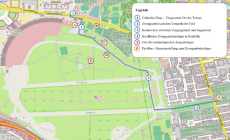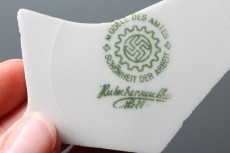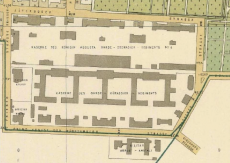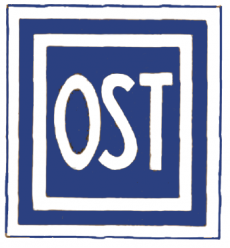Walking Tour of Tempelhof Field: 4. On the Go: An Archaeological Dig
Deutsch
From the commemorative plaque, stay to the left and continue to walk diagonally onto the airport grounds. After crossing a small garden-like area, both the tennis courts and the Shoalin Temple should be on your left.
Where the landing field (maneuvering area) intersects with the access road, you will find an archaeological excavation that has been in progress since 2012. Professor Reinhard Bernbeck, the director of the excavation, explains why they started to dig at Tempelhof Field: “The reason for the dig is to tell the stories of those people who could never tell their own history, and to make them visible and to give them a voice.”a Archeological sources allow researchers and historians to gain perspective and insight into the daily activities of the past, an aspect of Tempelhof history which has not been found in documents or recalled in personal memories.
There are two locations at Tempelhof Field which are of particular interest to the archaeologists: the old Tempelhof Airport (see map: E), which was partially destroyed during World War II and later completely demolished, and the Lilienthal Camp (Lilienthal-Lager), the barracks both run by and belonging to Lufthansa (see map: C,D). The barracks were located east of Lilienthalstrasse and north of the old airport. The remains of Lilienthalstrasse can still be seen today: it is the asphalt road which intersects with the access road and the landing field.
Four of the Lufthansa barracks originally stood to the left of where the basketball courts are today (see map: C), and on the south side of the landing field there was a kitchen and a supply barrack (Versorgungsbaracke) (see map: D). During the excavation, archaeologists also found the remains of animals bones, but given that the (foreign) prisoners were seldom given meat to eat, the animal remains indicate that during the war the kitchen was likely separate from the barracks and primarily used by the German workers.

The bottom of a porcelain plate painted with the words “Beauty of work” (“Schönheit der Arbeit”) was found near the kitchen and supply barracks which belonged to Lufthansa.
(Photo Nr. 1873_046_325-7) (c) Jessica Meyer/Landesdenkmalamt Berlin
The excavations, which continued through 2013, initially began with archeological research on the grounds of the Columbia House concentration camp (see map: A). Excavations are also scheduled to take place around the area of the Richthofen barracks, which belonged to Weserflug (see map: B). The Richthofen barracks were located in the area where the baseball fields are today. The particular type of excavations taking place on Tempelhof Field have only been carried out in a few other isolated locations in Germany. This area of study is known as Modern Archeology and is chiefly concerned with finding and researching relics from the twentieth century. The practice of Modern Archeology at Tempelhof Field provides crucial evidence in piecing together Germany’s Nazi past.
On the premises of the Lilienthal barracks, archeologists have found approximately 10,000 relics, the majority of which originated from the decades directly following WWII. Conservationist and Professor Jörg Haspel remarked on the Lilienthal findings: “What surprised us was the exceptional amount of objects, and the fact that they were buried just beneath the grass.”b Among other things, coffin handles dating back to World War I have also been found. During that time (early 20th century) a cemetery was located on the area which is now Tempelhof Field, but it had to be cleared to make way for construction of the old airport. Airplane pieces from World War II, likely repaired by the forced laborers, were also found during the excavation. The rest of the objects found likely came from the camp barracks: pieces of dishware, parts of a tile stove, plaster and concrete foundations. Relics from the post-war period also help to document the presence of Americans: tubes of razor gel, combs, toothbrushes and even a license plate from Ohio.
Continue along the airfield. After walking approximately 500 meters you will reach the first runway and the third station of the tour (see map: 3).
Ekaterina Akopyan
Read on
- Walking Tour Tempelhofer Feld (PDF for printing, in German)
- Malene Gürgen, Blicke in die Vergangenheit, in: Die Tageszeitung, 26.12.2012, http://taz.de/Tempelhofer-Feld/!108042/
- Thomas Lackmann, Tempelhofer Unfreiheit, in: Der Tagesspiegel, 31.07.2012, http://www.tagesspiegel.de/berlin/tempelhofer-unfreiheit/6940642.html
Notes
- Malene Gürgen, Blicke in die Vergangenheit, in, Die Tageszeitung vom 26.12.2012 unter: http://taz.de/Tempelhofer-Feld/!108042/ Last access, 05.04.2013. (back)
- Das Erbe unter unseren Füßen, in Facetten-Magazin Neukölln vom 23. 11.2012 unter: http://facettenneukoelln.wordpress.com/2012/11/23/das-erbe-unter-unseren-fusen/ Letzter Zugriff 05.04.2013. (back)







